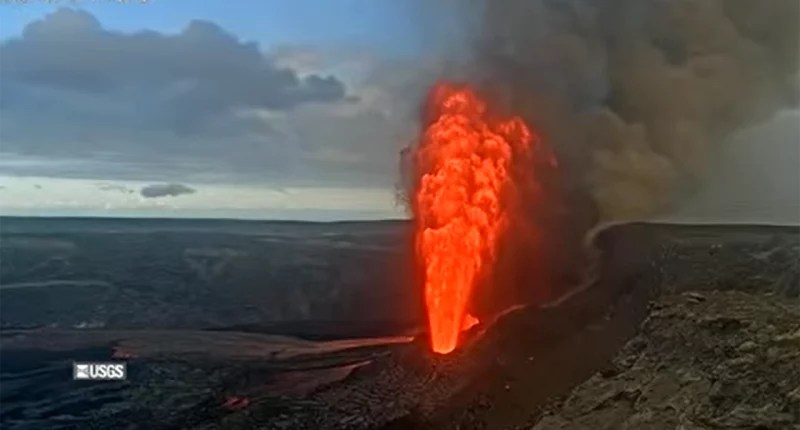Share this @internewscast.com
Kīlauea Volcano, found on the southeastern edge of Hawaii Island, had an impressive lava fountain that soared to at least 1,000 feet over the weekend.
The United States Geological Survey (USGS) notes that Kīlauea is among the most active volcanoes globally. It has been erupting on and off since December 23, 2024, within the summit caldera of Hawaiʻi Volcanoes National Park.
The volcano’s 23rd burst of activity kicked off late last week with minor spattering and flames. As reported by Hawaiʻi Volcanoes National Park, small lava fountains began and lava spilled over from the north vent starting at around 11:30 a.m. on Saturday.
“Two eruptive vents are located in the southwest part of the caldera, referred to as the north and south vent, and they have been intermittently active, producing new lava flows over parts of Halemaʻumaʻu crater surface,” according to the USGS.
As of 5:20 p.m. local time on Sunday, the south vent had lava fountains 230 feet high, while the north vent had lava fountains 1,000 feet high, according to Hawaii News Now.

Eruptive activity at the summit of Kīlauea within Hawaiʻi Volcanoes National Park. (United States Geological Survey)
USGS livestreams of the eruption site showed the lava fountains dropping in height and later stopping. The vents were still glowing and lava was still visibile on the crater floor.
The volcano’s last “fountaining phase” extended for about 10 hours on May 16, according to the USGS.
Kīlauea experienced other recent fountaining phases this month on May 11, May 6 and May 2, lasting eight hours, 4.5 hours and eight hours, respectively.
During the ongoing eruption, the USGS reported that pressure building beneath the surface caused an inflationary tilt prior to a lava fountaining episode.
As pressure within the magma is released when lava fountaining begins, a switch to a deflationary tilt occurs. That pattern of inflation and deflation with every recent lava fountain episode “creates a saw-tooth pattern in ground tilt records over the past several months,” according to the USGS, though the government agency reports that the summit has shown little net change in pressurization since the eruption began on Dec. 23, 2024.
















